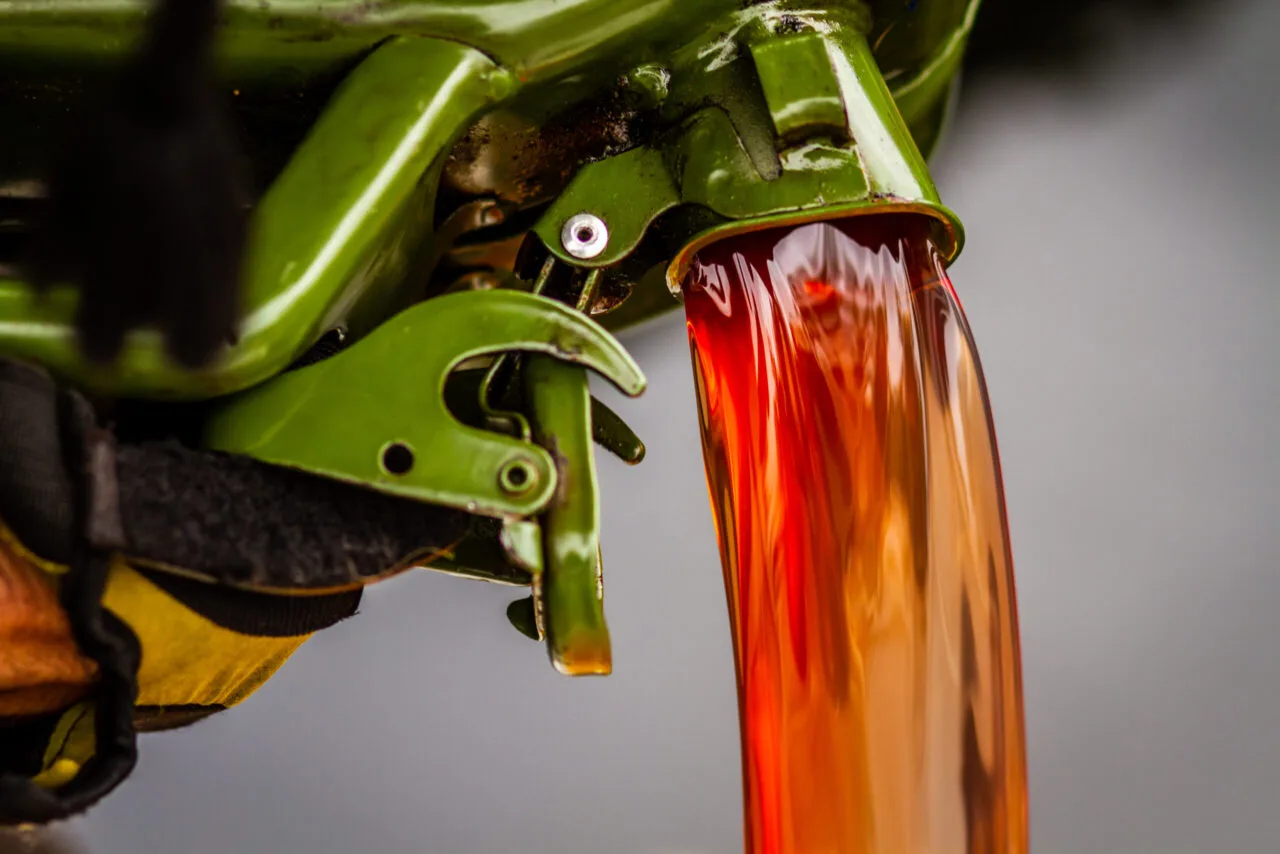


The use of red diesel, a rebated fuel intended for off-road vehicles and machinery, has long been a tempting option for those seeking cost savings. However, the practice of removing the distinctive red dye from this fuel to use it illegally on public roads is fraught with legal risks, technical challenges, and environmental concerns. This comprehensive article delves into the intricacies of this contentious issue, exploring the consequences of fuel fraud, the difficulties in dye removal, and the sustainable alternatives that responsible individuals and businesses should consider.

Using red diesel illegally on public roads constitutes tax evasion, a serious offense subject to severe penalties. Fuel laundering, the process of removing the red dye and chemical markers from diesel, is itself a criminal act punishable by law.
| Potential Consequences | Description |
|---|---|
| Vehicle Seizure | Authorities can seize vehicles found using illegal fuel |
| Massive Fines | Substantial financial penalties for fuel fraud offenses |
| Imprisonment | Individuals may face imprisonment for severe cases |
Authorities have implemented stringent measures to combat fuel fraud, employing advanced detection methods to identify illegal fuel usage.
| Detection Methods | Description |
|---|---|
| Roadside Testing | On-site testing for chemical markers in fuel samples |
| GC-MS Analysis | Gas chromatography-mass spectrometry analysis of fuel |
| New Dye Markers | Difficult-to-remove dye markers for enhanced detection |
Attempting to remove the red dye from diesel fuel is a complex and arduous task. Common methods have proven ineffective in completely eliminating all traces of the dye and chemical markers.
Common Dye Removal Methods:
Use of acids and alkalis
Activated carbon filtration
Exposure to sunlight
Fuel mixing to mask color
Despite these efforts, dye residues can persist in fuel tanks and engine systems, leaving telltale signs of illegal fuel usage. The difficulty lies in the advanced formulations employed by authorities, designed to resist removal techniques, making complete eradication virtually impossible.

Rather than engaging in illegal and environmentally harmful practices, responsible individuals and businesses should explore sustainable alternatives to red diesel.
Electric Vehicles
Powered by renewable energy sources
Clean and efficient transportation solution
Renewable Fuels
Biofuels
Hydrogen fuel
Reduced reliance on fossil fuels
Compliance with fuel regulations and responsible fuel usage are crucial for mitigating environmental impact and promoting sustainability. By adhering to legal requirements and embracing eco-friendly alternatives, individuals and businesses can contribute to emissions reduction and environmental protection while avoiding the risks associated with fuel fraud.
The use of red diesel illegally on public roads has significant environmental consequences.
| Environmental Impact | Description |
|---|---|
| Air Pollution | Emissions from improperly treated fuel contribute to air pollution |
| Climate Change | Exacerbates the issue of climate change |
| Fuel Waste | Fuel laundering process can lead to fuel waste |
| Chemical Release | Release of harmful chemicals during fuel laundering |
Adopting sustainable practices and embracing alternative fuel sources are essential steps towards minimizing the ecological footprint of transportation. By prioritizing responsible fuel usage and compliance with regulations, individuals and businesses can play a vital role in preserving the environment for future generations.
In conclusion, while the temptation to remove the red dye from diesel fuel may seem appealing due to potential cost savings, the legal risks, technical challenges, and environmental consequences make it an unwise and inadvisable pursuit. Responsible individuals and businesses should prioritize compliance with fuel regulations, explore sustainable alternatives, and contribute to emissions reduction efforts. By embracing eco-friendly transportation solutions and adhering to legal requirements, we can collectively work towards a cleaner, more sustainable future.
Here is an FAQ section with 10 additional questions and answers based on the article content:
The red dye is added to diesel fuel to distinguish it as a rebated fuel intended for off-road vehicles and machinery. It allows authorities to identify illegal usage on public roads.
No, it is extremely difficult to completely remove all traces of the red dye and chemical markers from diesel fuel due to advanced formulations designed to resist removal techniques.
Authorities can seize vehicles, impose massive fines, and in severe cases, individuals may face imprisonment for using red diesel illegally on public roads as it constitutes tax evasion.
Authorities employ various detection methods, including roadside testing, gas chromatography-mass spectrometry analysis, and the use of new, difficult-to-remove dye markers.
Sustainable alternatives to red diesel include electric vehicles powered by renewable energy sources, biofuels, hydrogen fuel, and other renewable fuels that reduce reliance on fossil fuels.
Fuel laundering, the process of removing the red dye and chemical markers from diesel, is considered a criminal act because it facilitates tax evasion and illegal fuel usage.
Using red diesel illegally contributes to air pollution, exacerbates climate change, leads to fuel waste, and can result in the release of harmful chemicals during the fuel laundering process.
Yes, certain industries, such as agriculture, horticulture, fish farming, and forestry, can continue to use red diesel legally for specific purposes as outlined by regulations.
Compliance with fuel regulations is crucial for mitigating environmental impact, promoting sustainability, and avoiding legal risks and consequences associated with fuel fraud.
Individuals and businesses can play a vital role in promoting sustainable transportation by embracing eco-friendly alternatives, adhering to legal requirements, and contributing to emissions reduction efforts through responsible fuel usage.

Sarah isn't your average gearhead. With a double major in Mechanical Engineering and Automotive Technology, she dived straight into the world of car repair. After 15 years of turning wrenches at dealerships and independent shops, Sarah joined MICDOT to share her expertise and passion for making cars run like new. Her in-depth knowledge and knack for explaining complex issues in simple terms make her a valuable asset to our team.












